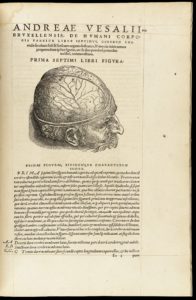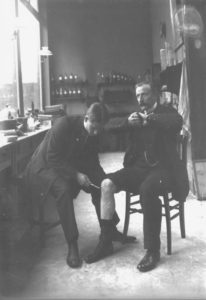Belgium occupies a central position in Western Europe, bordered by France, the Netherlands, Germany, Luxembourg, and the North Sea. Densely populated since ancient times, its inhabitants were famously dubbed by Caesar as “the strongest of the Gauls” (Horum omnium fortissimi sunt Belgae). In the Middle Ages this geographical area was occupied by independent fiefdoms which were later united with the northern Dutch provinces by the Dukes of Burgundy; together, they were called “The Low Countries”. They were ruled afterwards by the Holy Roman Emperor Charles V (Quintus) who, among others, was born in Gent and is considered by the Belgians as a native son. Subsequently, after the secession of the Dutch provinces during the religious wars, the southern territory, corresponding roughly to the current Belgian state, was ruled by the Habsburgs, first as “Spanish” and then as “Austrian” Netherlands. The modern state of Belgium was founded in 1830 as a constitutional monarchy, becoming lately a federal state, composed of three Regions and three linguistic communities: Dutch (about 60%), French (about 40%) and German (about 1%) speaking.
The territory of the future state of Belgium has always been a renowned trading region. Its industrious people specialized in crafts and trade that made the wealth of the provinces. In the 19th century, coal was found and triggered an industrial revolution that helped Belgium become one of the richest countries in the world at the beginning of the 20th century. Strongly impacted by the two major conflicts of the 20th century, Belgium emerged in the post-war era as one of the founding countries of the European Union.
As a result, its capital, Brussels, is now home to leading European institutions, such as the European Commission, the European Council and, partly, the European Parliament.
The many contacts with various cultures made Belgians tolerant and flexible. They have in common a love for the good life, which they find in their excellent food and drinks (Belgian beer and chocolate are worldly famous), comfortable housing, reliable medical and social services, highly developed communications infrastructure. Belgian people also share a unique, quirky, and subtle sense of humor.
In many domains quite a few Belgians are famous worldwide. In science one may cite the Flemish cartographer Gerardus Mercator, the astronomer-priest Georges Lemaître, the first to imagine what became the Big Bang theory of the origin of the Universe, and, more recently, two Nobel prize winners in chemistry (Ilya Prigogine in 1977) and physics (François Englert in 2013). In medicine, Belgians were awarded three Nobel prizes: Jules Bordet in 1919 (the bacteriologist who developed the first vaccine against the whooping cough and the test for syphilis), Corneel Heymans in 1938 (for discovery of mechanisms in the regulation of respiration) and Christian De Duve in 1974 (for discoveries regarding the structural and functional organization of the cell).
In culture and entertainment, one can mention, among many others, the Old Masters Jan Van Eyck and Peter Paul Rubens, the Art Nouveau pioneer Victor Horta, the surrealist René Magritte, the inventor of the saxophone Adolphe Sax, the singer and songwriter Jacques Brel, the jazz harmonica player Toots Thielemans, Hergé, the creator of Tintin or the father of Commissaire Maigret, Georges Simenon.
Famous sportsmen and women could certainly be added to this list, including the cyclist five times winner of the Tour de France Eddy Merckx, the World number one tennis women Kim Clijsters and Justine Henin and, of course, the most cherished of all in later times, the national football team “The Red Devils”.
Visitors in Belgium appreciate the Gothic and Baroque charms of the Grand Place/Grote Markt in Brussels, the well preserved medieval merchant cities of Brugge and Gent, the museum René Magritte, the natural landscapes and outdoors in the Ardennes region and the famous animal theme park Pairi Daiza. And, of course, ordering some moules-frites/mosselen-frite together with a Trappist beer is a must. Did you know that six among the eleven authentic Trappist beers in the world are made in Belgium?
The Belgian healthcare system is one of the best in Europe and arguably in the world. Funded by a combination of state social security contributions and private health insurance funds, it requires mandatory health insurance and it offers universal coverage at a reasonable cost.
The patients are free to choose their own medical professionals and places of treatment. Overall, Belgians are satisfied (more than 90%) with respect to the health system, far more than the European average.
The first studies of the human brain in Belgium could be dated back to the 16th century to the body dissections of the great anatomist Andreas Vesalius (1514-1564). The most famous Belgian neurologist was Arthur Van Gehuchten (1861-1914), a pioneer in the anatomy and pathology of the nervous system. He developed the neuronal theory together with Ramon y Cajal and was the first to name the extensor plantar reflex “Babinski sign”. He was also a pioneer in the use of cinematography for didactic purposes.
His rich cinematographic library was restored in 2001 (see “Arthur Van Gehuchten takes neurology to the movies”, G. Aubert, Neurology, 2002).
The Belgian Neurological Society was founded in 1896, one year after the creation of the “Journal belge de Neurologie et d’Hypnologie” who became later the Acta Neurologica Belgica, one of the oldest neurological journals in the world. Many Belgian neurologists have made significant contributions in the 20th century. In particular, Ludo van Bogaert (1897-1989) was one of the most distinguished Belgian neurologists. He created the world famous Bunge Institute and the Born-Bunge Foundation. He wrote 753 papers and described numerous diseases (e.g., subacute sclerosing panencephalitis). In 1957, during the first International Congress of neurological Sciences in Brussels, van Bogaert became founder of the World Federation of Neurology, which he presided during two terms. Belgian neurologists have always been active in the European neurological societies. It was during the concomitant presidency of two Belgian neurologists (Jacques De Reuck and Gustave Moonen) that the two former societies united as the European Academy of Neurology in 2014.
Neurology training in Belgium lasts five years and comes after six years of medical studies. The training is coordinated by one of the following Belgian Universities (in alphabetical order): Universiteit Antwerpen, Vrije Universiteit Brussel, Université Libre de Bruxelles, Universiteit Gent, Katholieke Universiteit Leuven, Université de Liège, Université catholique de Louvain. Training consists of clinical practice in neurological departments of University and general hospitals, theoretical courses, active presentations and publications of clinical studies and research in neurology and neuroscience. Young Medical Doctors who are EU citizens can apply for training in neurology in Belgium, for a PhD or a Postdoctoral research position in neurosciences. Many researchers from all around the EU work in Belgian clinical settings or research laboratories. Belgian neurologists (about 600) work in hospitals and/or private practice. Most of them apply the agreements with the social security authorities, which means that in 2017 a visit to the neurologist costs €50,29 (€38,29 reimbursed by the social security).
Professor Adrian Ivanoiu, President of the Belgian Neurological Society (BNS)
Acknowledgements: Professor Peter Van den Bergh, past president of the Belgian Neurological Society (1998-2001) as well as the members of the executive committee of BNS, Professors Paul Boon, Veerle De Herdt, Jacques De Keyser, Souraya El Sankari, Sebastiaan Engelborghs, Alain Maertens, Massimo Pandolfo, Jean Schoenen, Wim Van Paesschen, Michel Van Zandijcke.
Please read articles by Belgian authors published in the European Journal of Neurology here.
An interesting interactive case has been published in eBrain this month. It has been written by the Neurology and Rheumatology Teams from UCL. Please, find this abstract here.











